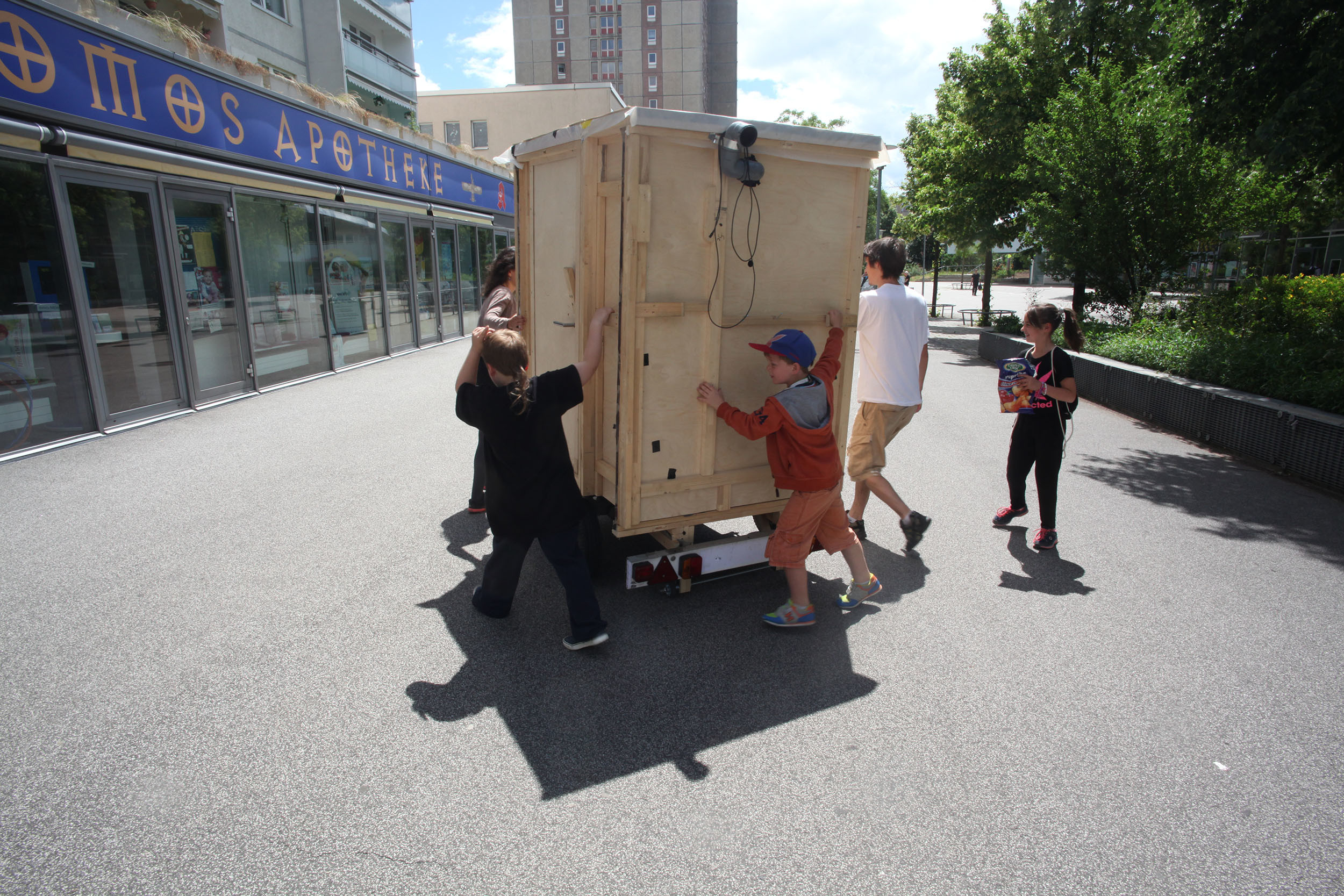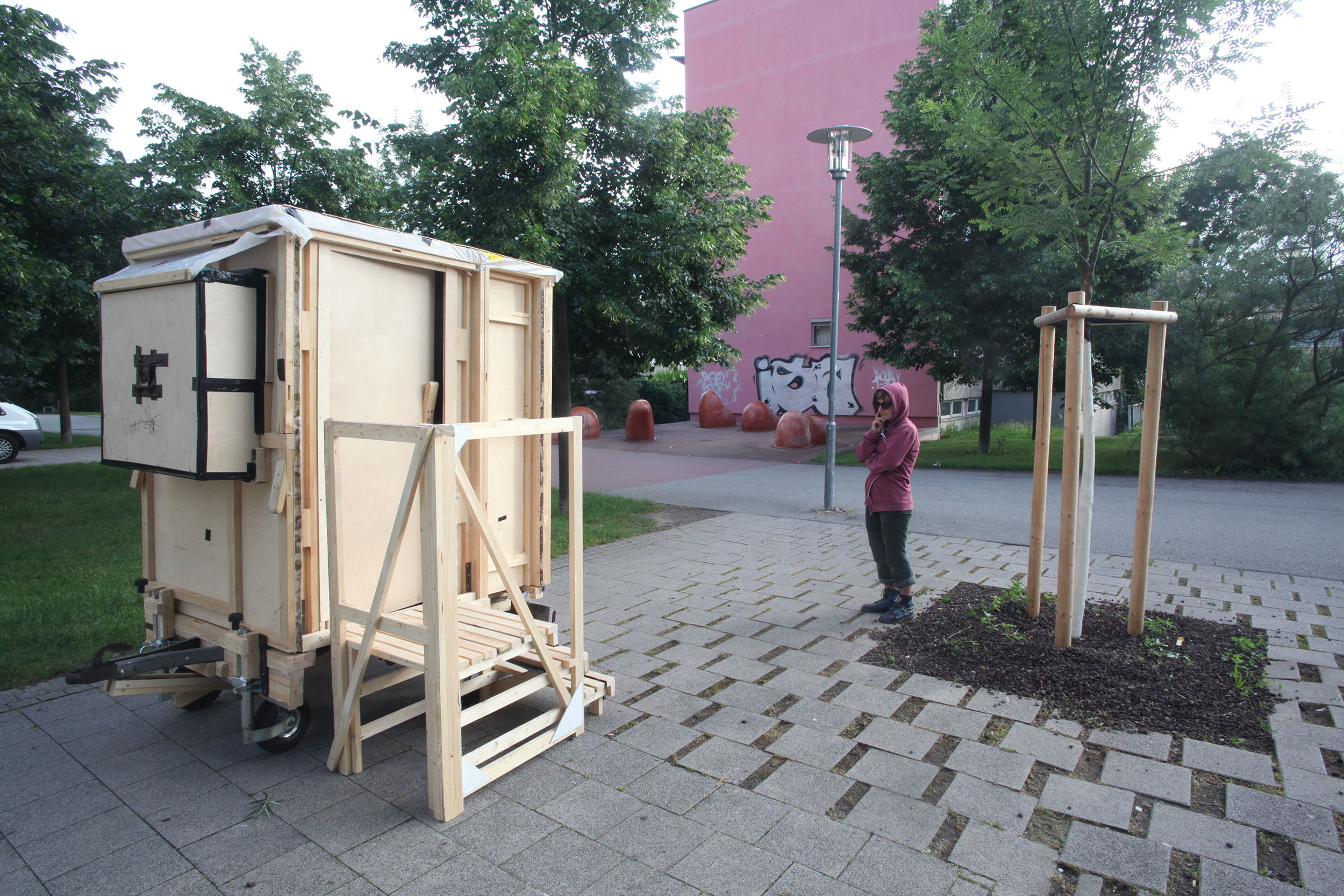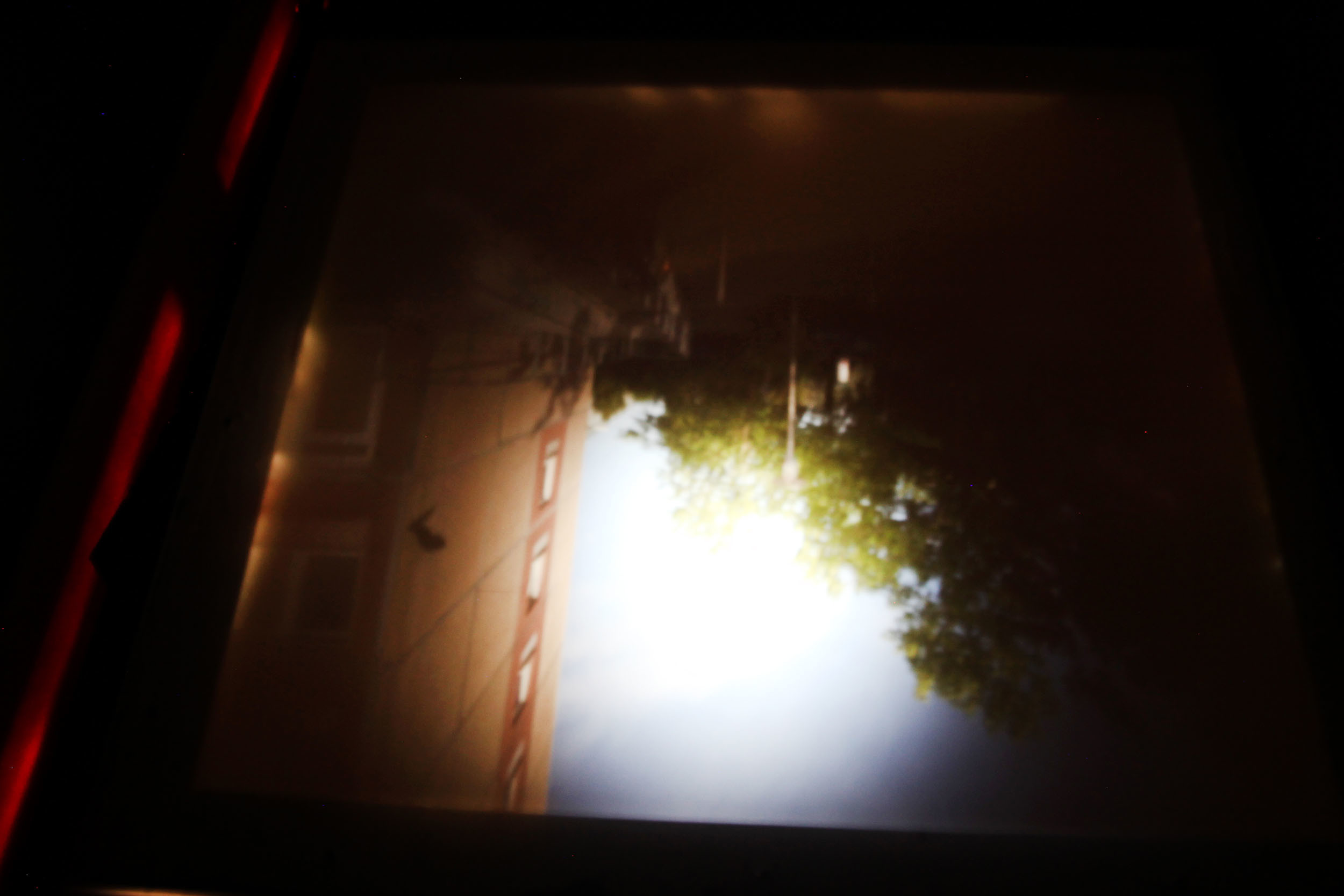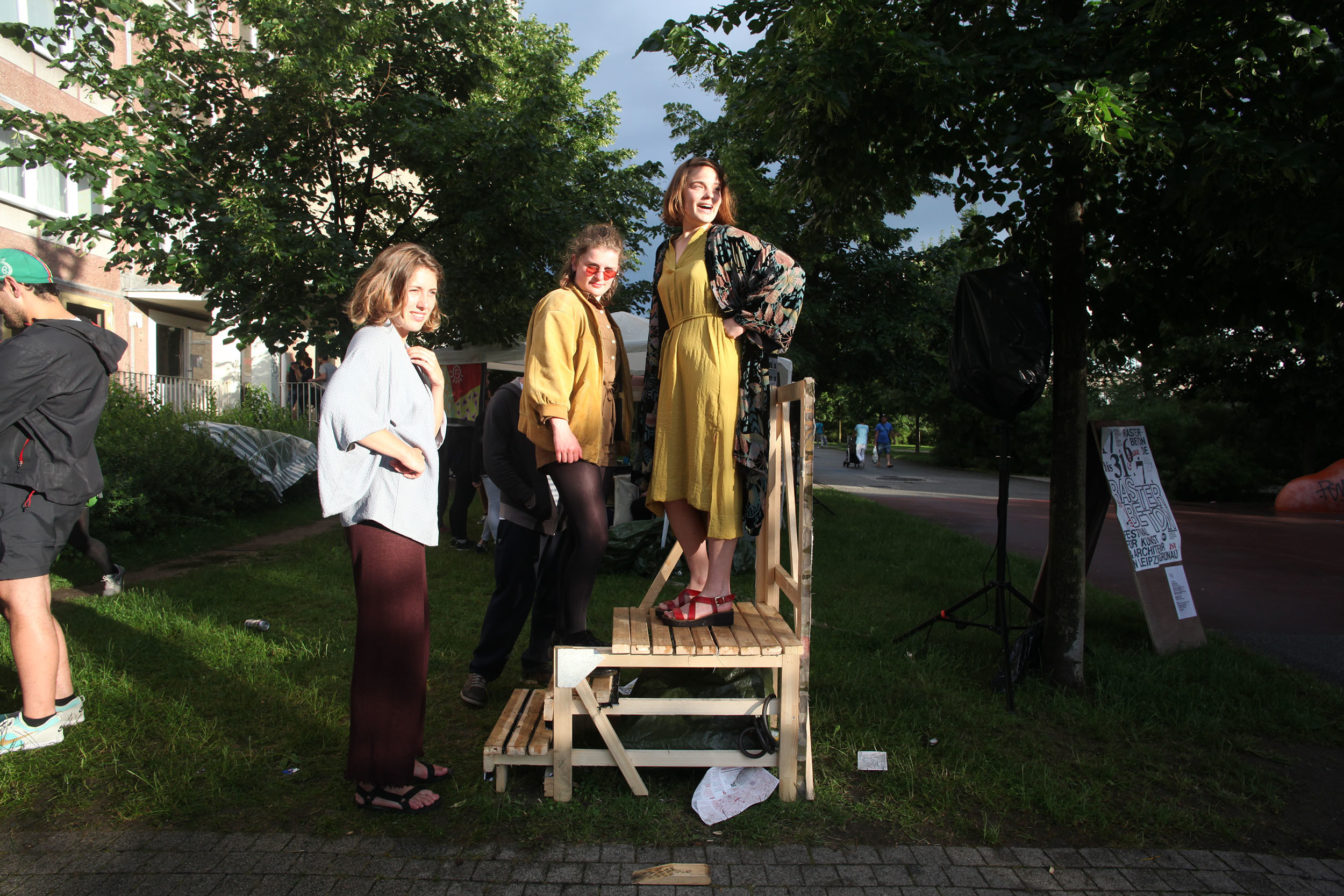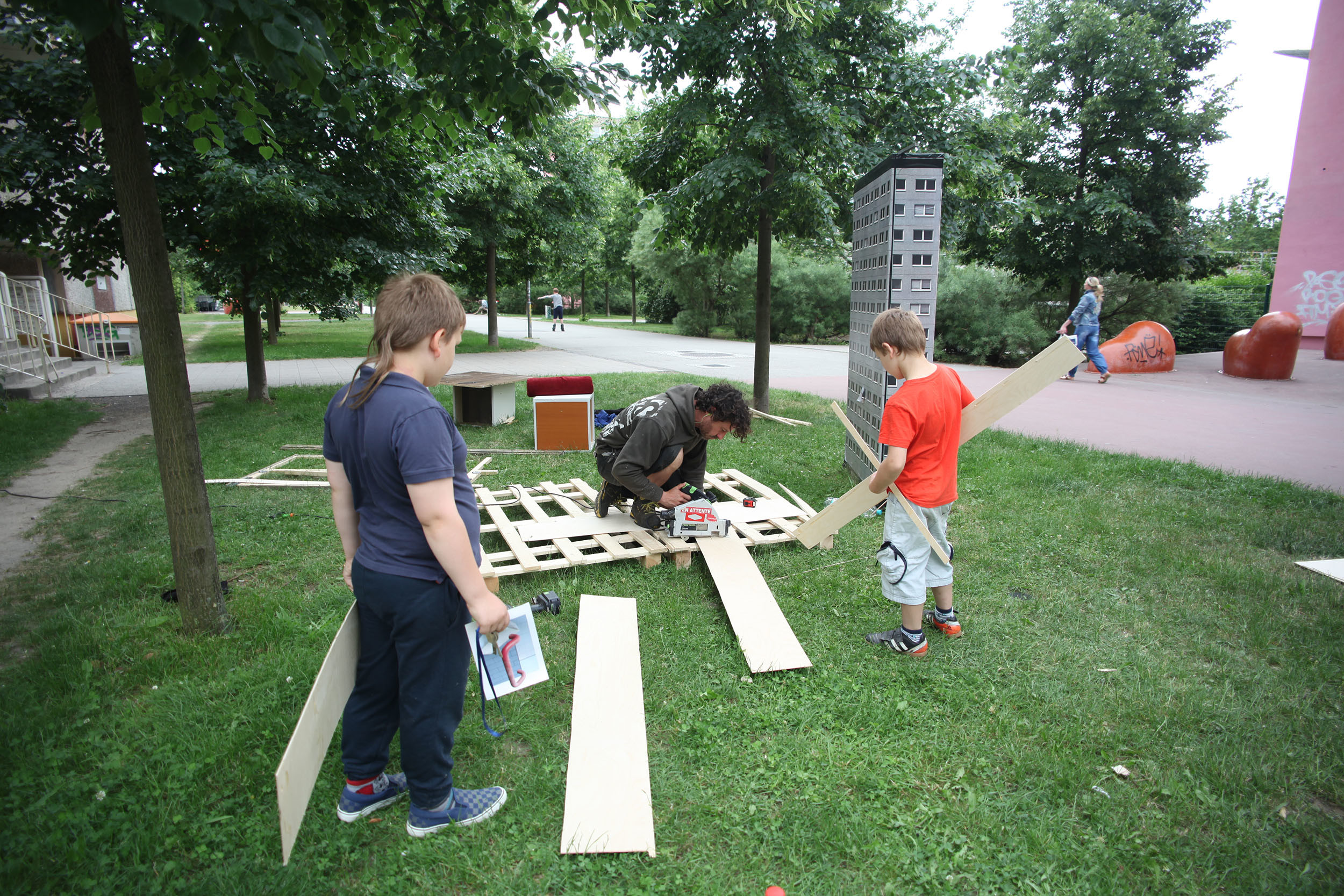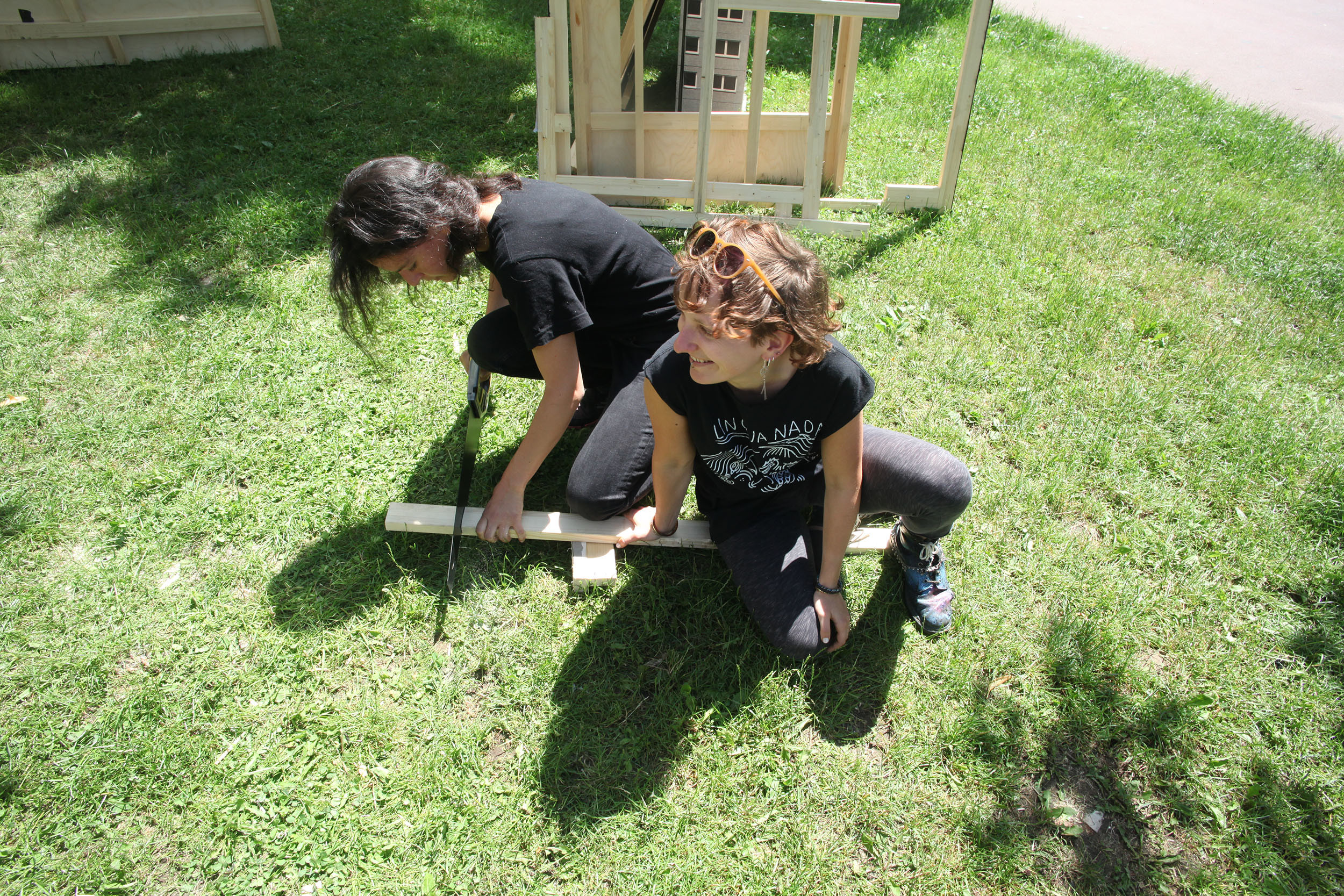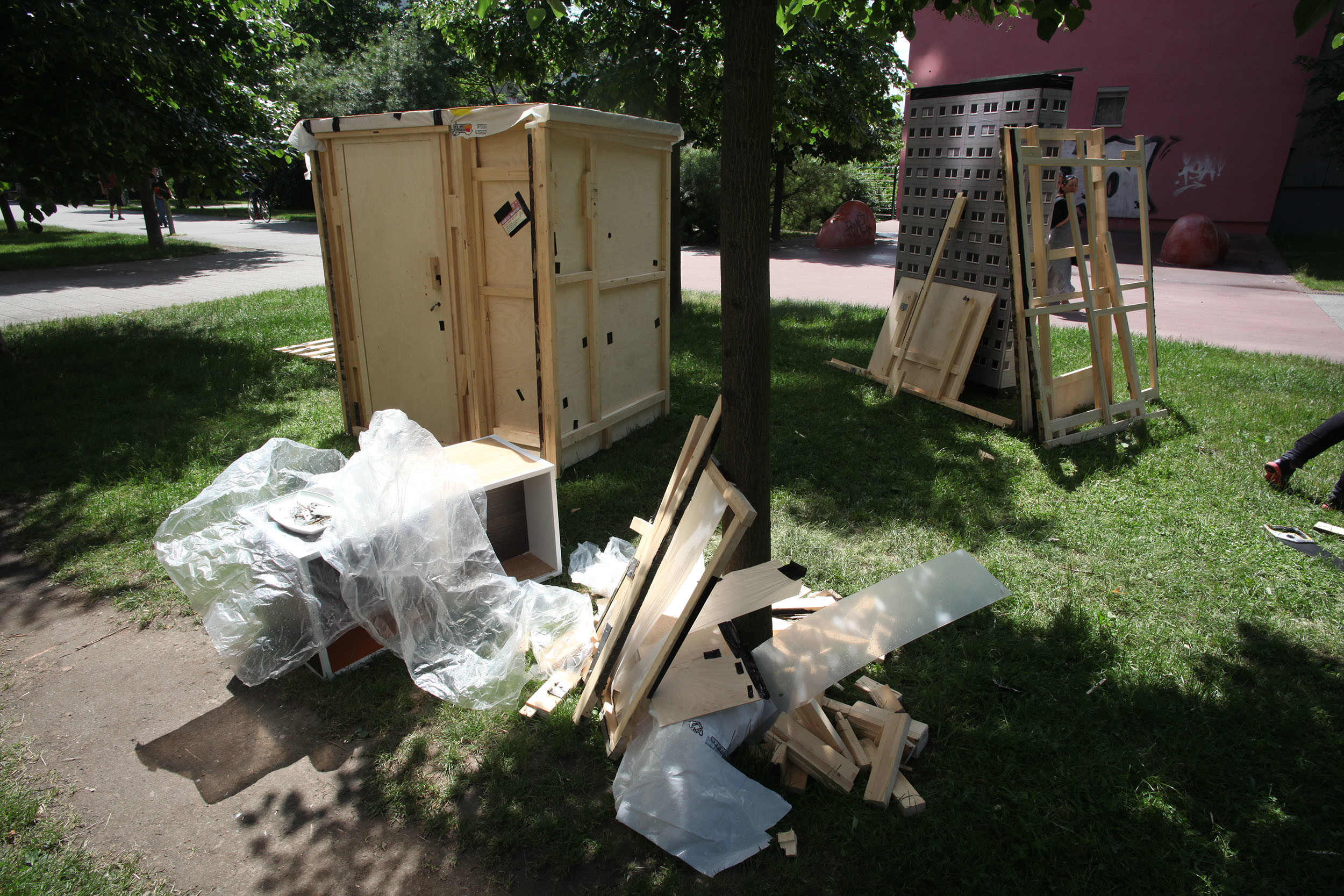
July 2016
Kino Tour
Grünau neighbourhood
Leipzig
Germany
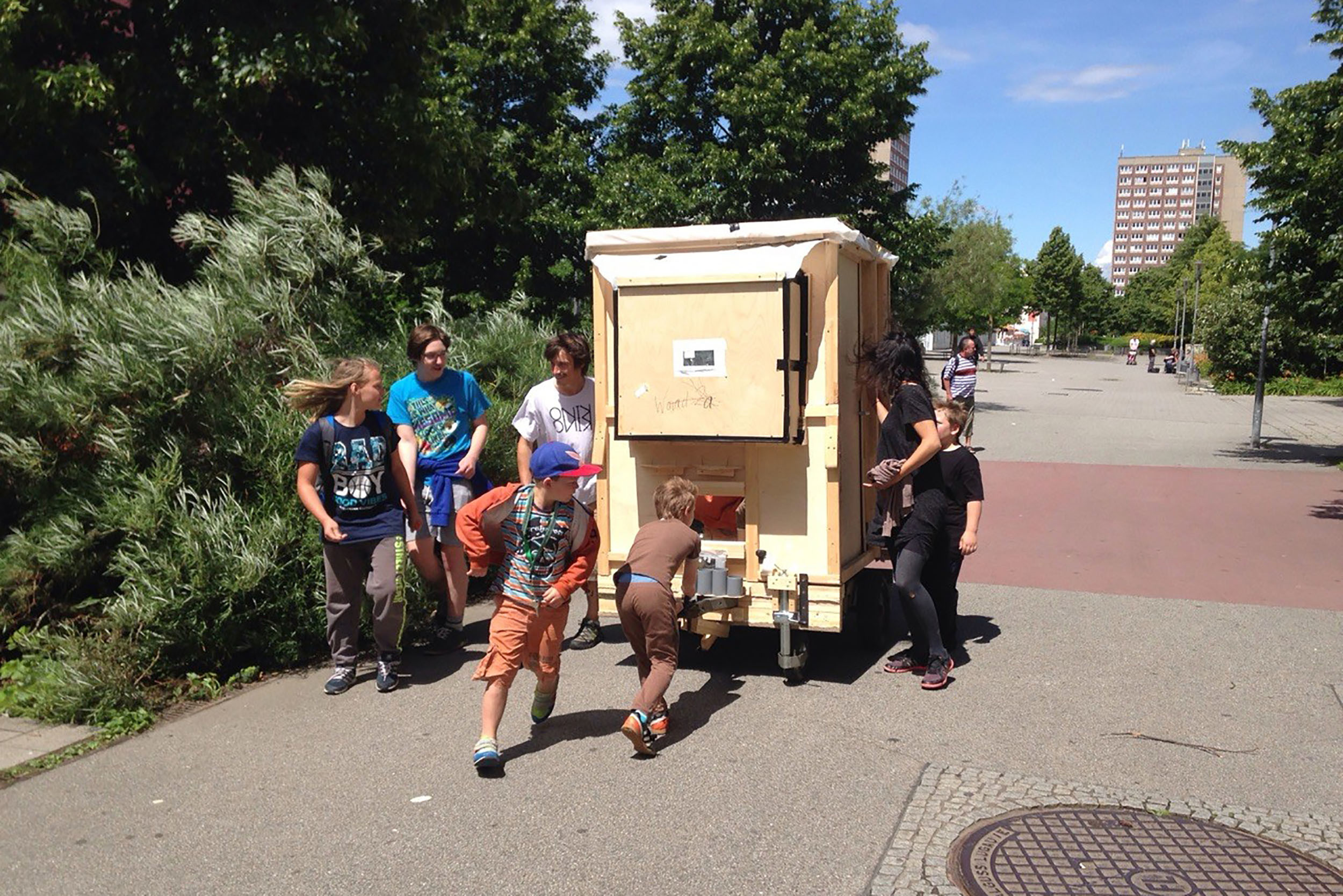
The Pinhole
In the 4th century B.C., the Greek mathematician and philosopher Aristotle was the first to observe a simple optical phenomenon, the pinhole camera : when daylight is filtered through a small hole in a room plunged into darkness, it projects on the opposite wall an inverted image of the scene in front of the opening. Since then, the technique has made its way into photography and then into cinema.
Die Welt steht Kopf – The World Upside Down
Bruit du Frigo built and activated a low-tech live-cinema wagon in Leipzig-Grünau in the context of the festival Raster:Beton. Based on the principle of the pinhole camera (a box with a hole), this camera obscura projects the outside world upside down on a screen. It is composed by an old trailer that has been adapted and a wooden box on it, built from theater sets.
This mobile micro-cinema room projects without the need for technical means the landscape scrolling outside. Two people comfortably installed on their cinema seats, popcorn in hand, observe the reality staged by a traveling along a route through the neighborhood, different orientations of projections, sounds chosen in real time and diffused inside the cabin. By freeing them from the routine, “Kino Tour” allows the spectators to step back and see with a new eye the details of an apparent banality.
KinoTour performance
The KinoTour wagon is docked on a small platform. Two persons can enter simultaneously for a ten minutes live-cinema session. The door closes and the eyes slowly adapt to the darkness. The shutter opens and the outside world appears upside down on the screen. The team is composed of a “film director”, a “pushing assistant”, a “sound engineer” and more (depending on the number of helpers). We communicate by signs, following the instructions of the film director, in order to immerse the public entirely in the movie without hearing our voices. The wagon starts to roll along the traveling paths we chose and adapts depending on specific situations we want to reveal. Like a huge movie camera, we push the box toward the block buildings, zoom into the bushes, follow a family, catch the moment of a neighbor hanging out the washing, spin in the middle of the colorful market, stop the scene on an altercation, cut! Some mirrors and small objects we find are used to orientate the view and create special effects. A spy microphone allows us to target specific noises as people talking, a bike passing, the leaves of the tree we are scrubbing, etc. We make close-ups on people we don’t know: the intriguing box allows us more proximity to foreigners than a classic film camera would. The upside down world loses soon even long date inhabitants: the felt movement contradicts the image movement, the sky becomes a big lake on which we slide, the bit blurry image allows interpretation.
The international art and architecture festival Raster:Beton highlights the large Grünau ensemble, built in the former East Germany in the 1970s and 1980s, and questions it through art projects, debates, exhibitions, wanderings and projections.
Kino Tour is interested in the materiality of this place – whose buildings and certain paths are constructed of prefabricated concrete slabs – as well as in its inhabitants who make these spaces alive. The projections allow us to link the built and vegetal landscape with the human who created, adapted and animates it. This aesthetic experience of everyday acts, questions the relationship of the inhabitants with their environment and puts them in the position of both spectator and actor in this film that is reality. In this way, we wish to show the public-inhabitants that they are the protagonists of the evolving landscape in which they live. Aesthetizing and alienating the natural and built landscape, the device allows us to take a new look at the Grünau neighbourhood and its inhabitants, just as in a film projection.
Last
projects
> all projectsAt the crossroads of art, territories and populations, our approach aims to promote the transition to sustainable, shared and welcoming cities, by proposing alternative ways of imagining and building our living environment and by exploring new forms of public space.


The Secret Balconies # 3 – The Pinède balcony
Montpellier

Common lands trail
Exhibition Nouvelles Saisons, arc en rêve centre d'architecture Bordeaux
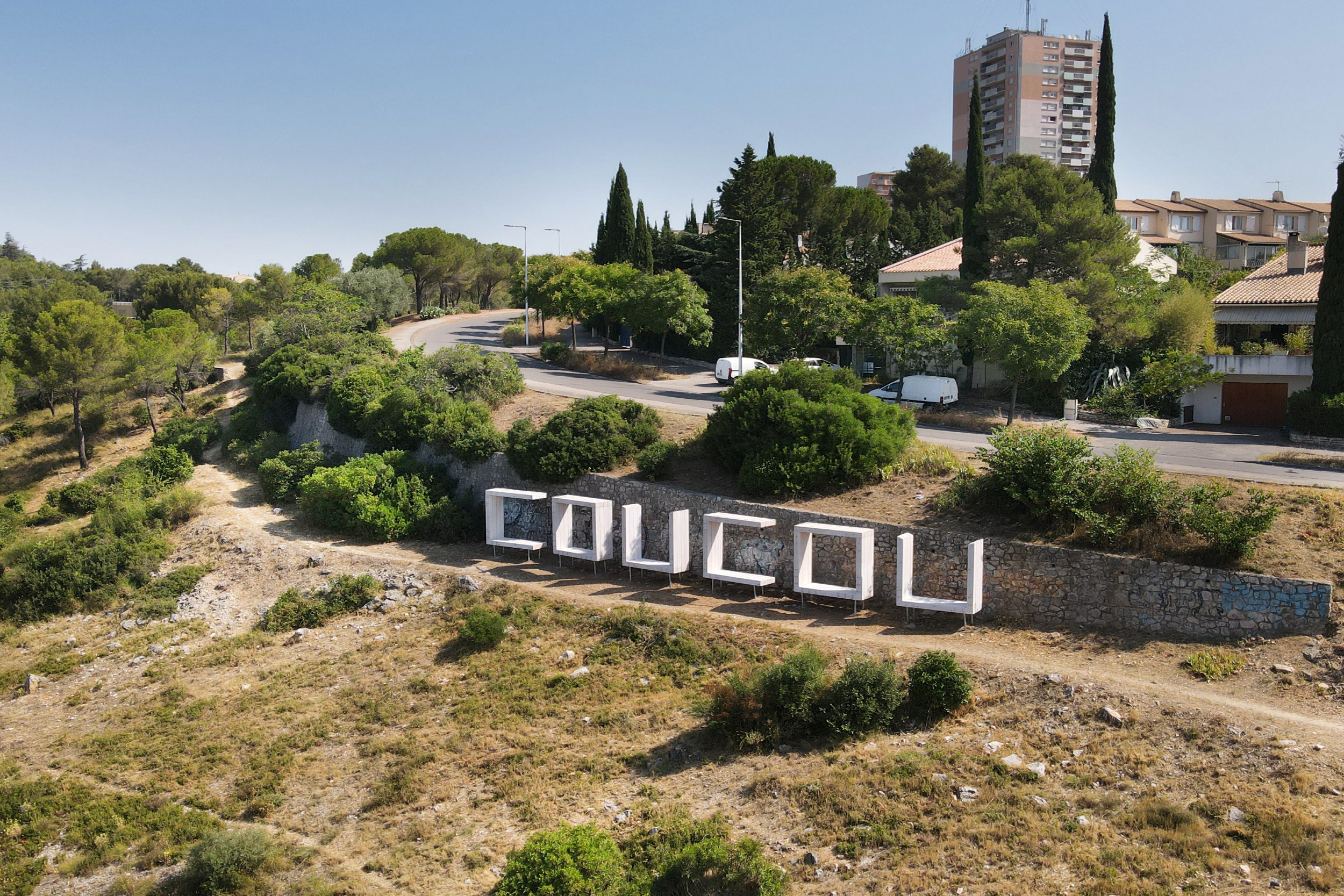
The Secret Balconies # 2 – Balcony des Hauts de Massane
Montpellier

The Secret Balconies # 1 – Balcony Larzac
Montpellier

The Portable Public Spaces
Lyon
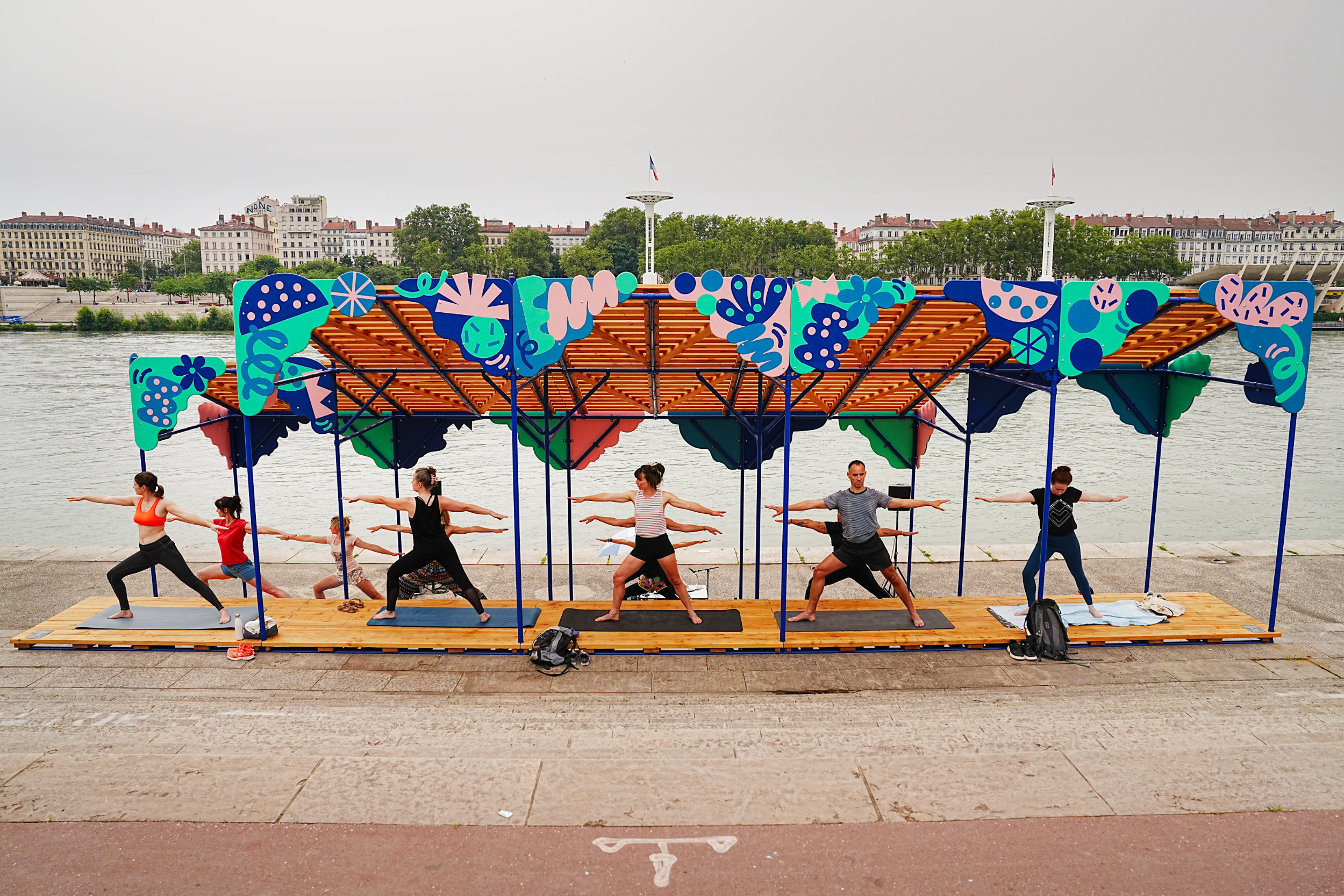
Modular shade canopy
Lyon




